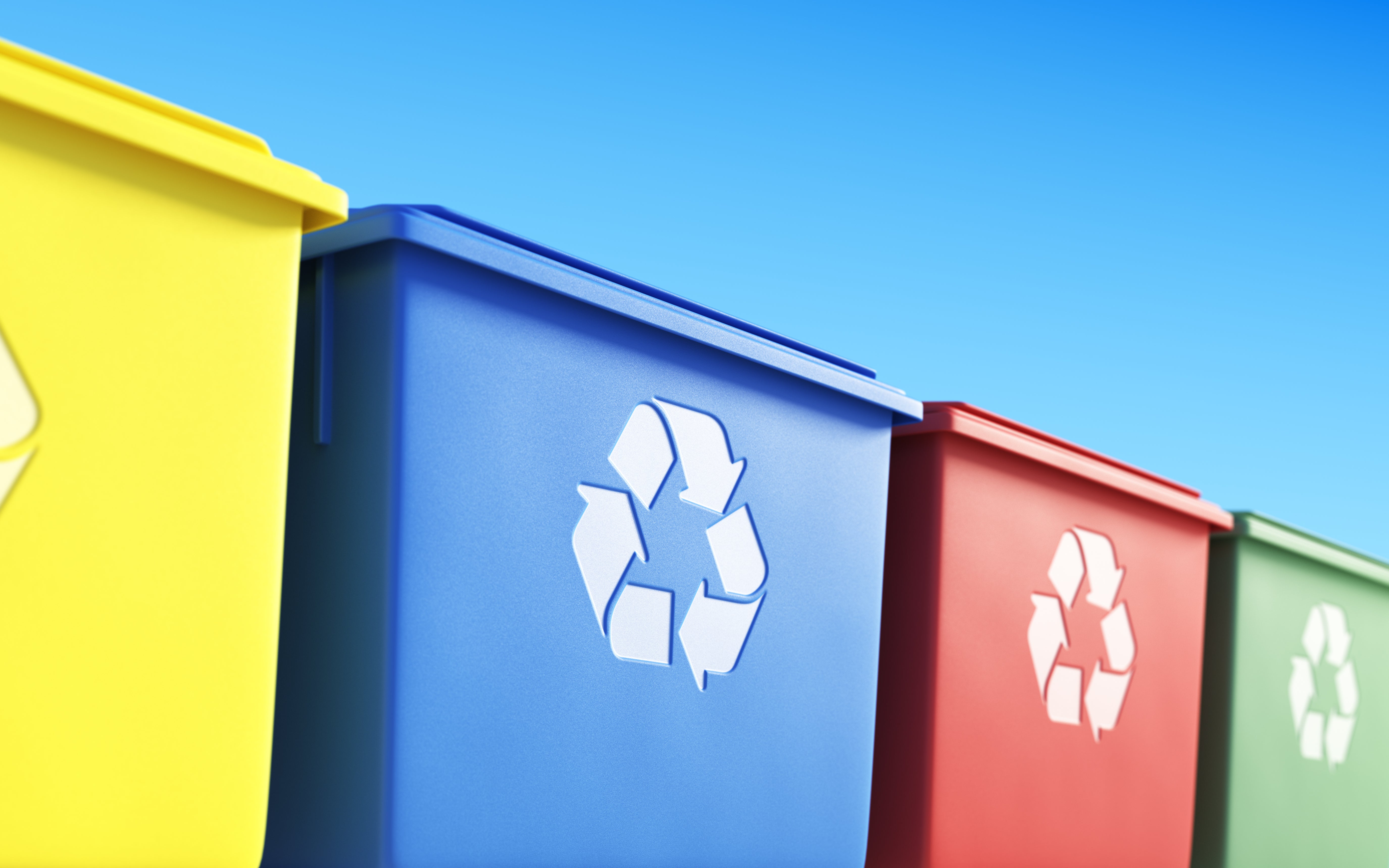What Happens When You Recycle Plastic?

Plastic is one of the most commonly used materials in the world with 275,000 tonnes of it being used in the UK every year – this is the equivalent of 15 million bottles per day and that only accounts for single-use plastics i.e. the ones that get used once and then disposed of right away.
Although we continue to look for more sustainable materials that can replace plastic, it is here to stay in some capacity for a while. Therefore, it is important to look at ways in which we can manipulate the material to make it more eco-friendly such as recycling.
Not all plastic is recyclable but most of it is. Here is how to work out what can and cannot be recycled.
Plastics are grouped into types and given a plastic resin code, which is a number between 1 and 7, this system makes it easier to identify which plastics can be recycled.
The most commonly recycled plastics are labelled 1, 2 and 5 - also known as PET, HDPE and PP – and can be found in products such as water bottles, milk cartons and ready-meal trays.
The plastics under the categories 3, 4 and 6 – PVC, LDPE and PS – are somewhat recyclable but need to be deposited to specialist facilities and, finally category 7 (crisp packets, plastic wrap) is the one type of plastic that is incredibly hard to recycle. This is due to how this plastic is made; the polymers form irreversible chemical bonds that cannot be broken down making it the least eco-friendly plastic on the market.
Even though the majority of plastics can be recycled, there is a major problem when it comes to the awareness or consciousness that people in the UK have when it comes to recycling plastic with less than 10% of it actually being recycled.
Recycling plastic has many economical and environmental benefits, some of which are:
- For every ton of plastic that is recycled, 7.4 cubic yards of landfill spaced is saved.
- Using existing plastic to create new products uses significantly less energy than creating plastic from raw materials so recycling reduces the amount of non-renewable energy used in the plastic-making process.
- Recycling creates more jobs than sending rubbish to landfill or incineration because more manual labour is required.
- Over a million sea birds and over 100,000 marine animals are killed by plastic pollution every year. This number will greatly reduce if we recycle more plastic.
Not only is important that we get better at recycling plastics to save landfill space and reduce the amount of plastic pollution in our oceans, but the process plays a key role in manufacturing new products and contributing to a circular economy.
Let us explain.
When you throw a recyclable plastic product into a recycling bin, it gets collected by your local council who take it to a Material Recovery Facility (MRF) where it can be sorted into separate materials, such as plastics, glass and paper.
Plastics are then sorted even further into different polymer types which is based on the 7 categories mentioned earlier. This is usually done automatically but there is an element of manual labour involved in order to remove any contamination such as residue in shampoo bottles or food waste left in trays. This is why it is important to thoroughly clean bottles and containers before putting them into your recycling bin.
Once this initial step is complete, the recycled plastic can be transported to a reprocessing facility where it can go through two different process.
Mechanical recycling is the most common method and involves cleaning and shredding the plastic into flakes or melting it into pellets depending on the type of plastic.
Chemical recycling is when the plastic is broken down into monomers to form new polymers that can be reused and this method is rarely used as it is more expensive.
Following either of these methods, the recycled plastic can then be shaped into new products with some of the most common being water bottles, bags, packaging, building materials and furniture.
These processes can continue with the same piece of plastic 2-3 times before its quality decreases to the point where it can no longer be used.
Our RPET Bags
We ethically source recycled PET (RPET) to create a range of reusable bags including tote bags, drawstring bags and foldable bags.
Not only is this strong and durable material perfect for making functional bags but its production uses 85% less energy and 1/10th of the water than virgin polyester. This is in keeping with our sustainability principles and continued efforts to find eco-friendly alternatives to harmful plastic bags.
PET is part of the thermoplastic family and one of the most commonly used materials in the world with its biggest use being in plastic water bottles which is what we use to create the RPET for our bags.
These bags can then be recycled at the end of their useful lifetime with no degradation to the quality of the fibres making them one of the biggest contributors to the circular economy.
All of our RPET bags can also be custom printed with your business branding or bespoke artwork to create a promotional or retail bag that will impress your customers, clients and employees.







